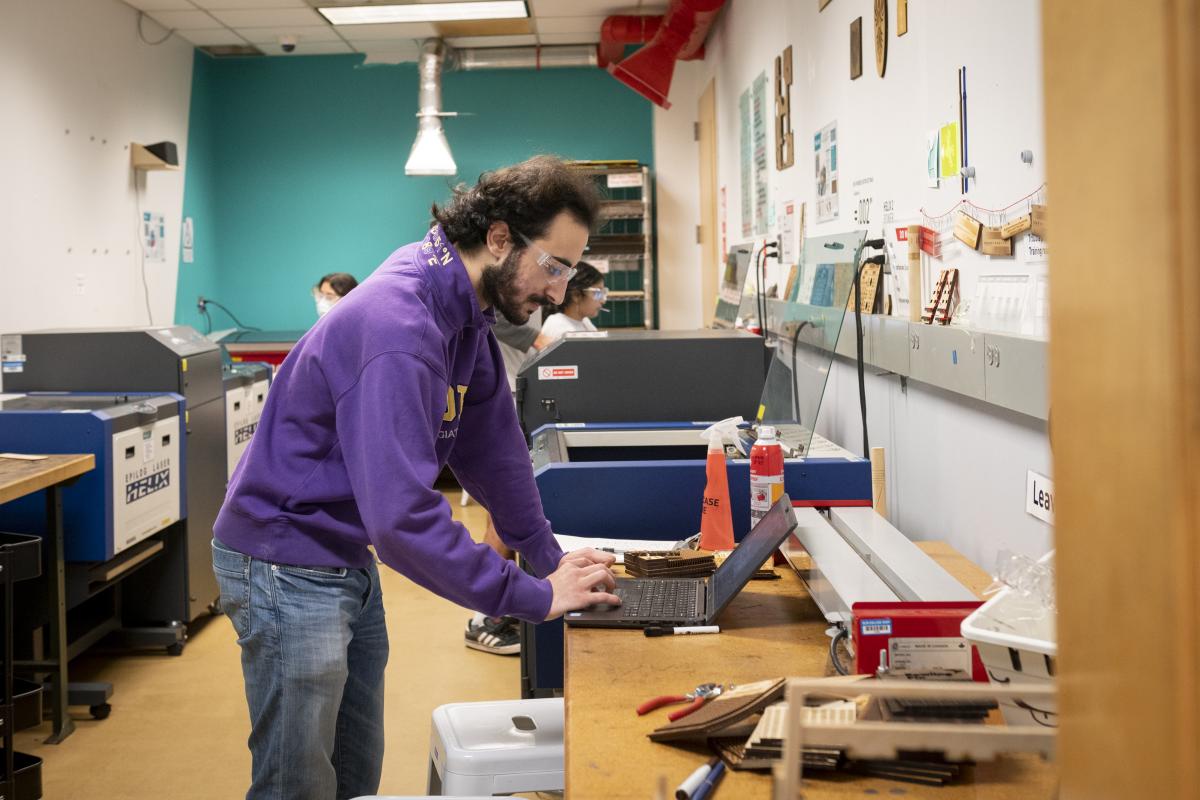STORY: Building an App for BIPOC Mental Health
Olin students and faculty in an experimental course work on a technological solution to connect those in need of wellness care with the right providers.
An experimental class at Olin is bringing together students, faculty, and a community partner called Inspired Relief to brainstorm a solution to support wellbeing with a focus on mental health for BIPOC (Black, Indigenous, and people of color) communities in the city of Boston.
Founded by three Black women, Inspired Relief creates safe spaces for Black and Brown people to explore traditional and nontraditional modalities to help break the stigma of mental illness and help guide them toward mental wellness.
The partnership started when Keyona Aviles, LHMC, one of the founders, reached out to her friend Amon Millner, associate professor of computing and innovation, for assistance in developing an app to improve the ways in which she and her team engage within their community.
“We really didn't know what language to use with the tech world for what we'd been dreaming up or if it was even possible yet, so we leaned heavily on my respect and trust of Amon to try this different approach to creating something new,” says Aviles. “Really it's been sharing that borrowed trust, space, and experience that's made this experience so mutually enriching.”
First, this idea became the focus of a Technology, Accessibility, Design (TAD) project, which uses disability and other differences as a lens to examine the ways in which technology can both enhance and diminish access to resources.

Image taken by Leise Jones. Student working in the shop for Technology, Accessibility, Design (TAD) Fall 2022 project.
“Keyona’s initial goal was to create more avenues for BIPOC individuals to be able to seek wellness in ways that suited their experiences and lives, in part because traditional mental health and wellness care often doesn’t,” says Paul Ruvolo, associate professor of computer science, who co-taught the TAD class along with Chhavi Goenka, visiting assistant professor of engineering. “We did a lot of exploratory work and built a relationship with Keyona and her team, which laid the groundwork for this new course.”
“As a visionary and helping professional, I’m surely used to navigating uncertainty and I recognize the skill and amount of energy it takes to translate unfamiliar concepts into experiences we can all recognize and work with,” echoes Aviles. “It's been fun, hope-generating, and inspiring to do that together [with Olin] while centering the filters that matter most to our communities.”
Co-taught by Millner and Ruvolo, this Special Topics in Engineering course is equally focused on meeting the learning needs of the four students involved, as well the real-world needs of the community partner.
“This course gives students practice taking ideas for interactive software and growing them through multiple phases toward reality,” says Millner. “They’re honing practices they’ve learned in previous classes, such as collaborative design, as they work closely with Inspired Relief—community partners who excel at sharing their wealth of knowledge pertaining to their practices and co-designing socio-technical prototypes to address real world challenges thoughtfully.”
Sushmit Dutta ’24 joined the class because of its small size and the ability to work with a real-world partner to come up with a solution to suit their needs.
“Keyona wanted a tool to better connect ‘helpers’ and ‘seekers’ of care in the BIPOC community, which led us to first need to understand is this audience and what are the challenges they face using current tools,” says Dutta, who is a Systems Engineering major with a concentration in Sustainability. “After exploring several ideas, we came back to the idea of creating an app, focusing mainly on Android users because they are more prevalent in the community.”
Throughout the course of the class, students have gone from paper sketches to building prototypes of the design to share with the client. While the run of the class won’t be sufficient to imagine, create, and launch a fully formed app, the students and faculty are working on different ways they can summarize the work so that it will have a life after class ends.
“We’re working on packaging our work so that this Inspired Relief app project could be picked up by another Olin course next year, such as one of Amon’s Designing Resources for Empowerment and Making (DREAM) projects, or future independent studies or experimental classes,” says Dutta. “Another option is to have everything ready for an outside consultant to take over and complete.”
“While many other classes and projects at Olin have a natural ending point, this is a different kind of class that fosters a symbiotic partnership,” says Millner. “We have an investment and a motivation on both sides to keep it going so that everyone—students, faculty, and invested partners—can continue learning and relationship building with a valued community member.”